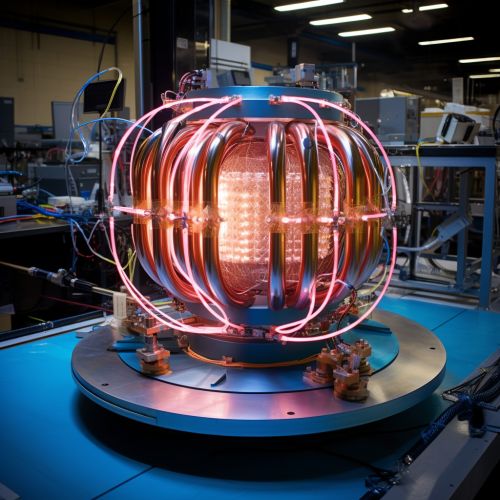Superconducting magnetic energy storage
Introduction
Superconducting Magnetic Energy Storage (SMES) systems store energy in the magnetic field created by the flow of direct current in a superconducting coil which has been cryogenically cooled to a temperature below its superconducting critical temperature. A typical SMES system includes three parts: superconducting coil, power conditioning system and cryogenic coolant system.
Superconducting Coil
The superconducting coil is the heart of the SMES system. The coil is made from a type of superconductor material that can carry a large amount of current without resistance when cooled to a very low temperature. The coil is usually wound into a toroidal or solenoidal shape. The superconducting state allows the coil to maintain a high current for a long period of time, thus storing a large amount of energy in the magnetic field.


Power Conditioning System
The power conditioning system is responsible for converting the alternating current (AC) from the power source to direct current (DC) for storage in the superconducting coil, and vice versa. It includes a rectifier to convert AC to DC, and an inverter to convert DC back to AC. The power conditioning system also controls the charging and discharging of the superconducting coil.
Cryogenic Coolant System
The cryogenic coolant system is used to cool the superconducting coil to a temperature below its superconducting critical temperature. This is usually achieved by using liquid helium or liquid nitrogen as the coolant. The cryogenic system includes a cryostat to contain the superconducting coil and the coolant, and a refrigerator to cool the coolant.
Energy Storage and Release
When energy is to be stored, the power conditioning system converts AC power from the source to DC. The DC current is then fed into the superconducting coil, creating a magnetic field and storing energy. The energy can be stored in the coil indefinitely as long as the coil remains in the superconducting state.
When the stored energy is needed, the process is reversed. The power conditioning system converts the DC current from the coil back to AC, which can then be used to power loads.
Applications
SMES systems can be used in a variety of applications. They are particularly useful in applications that require high power for short durations, such as power quality improvement, load leveling, and power system stability enhancement. SMES systems can also be used in renewable energy systems to store excess energy produced during periods of high production and release it during periods of low production.
Advantages and Disadvantages
SMES systems have several advantages over other types of energy storage systems. They can charge and discharge at a very high rate, allowing them to respond quickly to changes in power demand. They also have a high energy efficiency, typically over 90%. Furthermore, SMES systems have a long cycle life and can operate at a wide range of temperatures.
However, SMES systems also have some disadvantages. The main one is the high cost of the superconducting coil and the cryogenic system. Another disadvantage is the large size and weight of the system, which can make it difficult to install in some locations. Finally, the need for a continuous supply of coolant can also be a challenge.
Future Developments
Research is ongoing to develop new superconducting materials that can operate at higher temperatures and carry more current, which could reduce the cost and size of SMES systems. There is also research into new cryogenic cooling methods that could reduce the need for a continuous supply of coolant.
